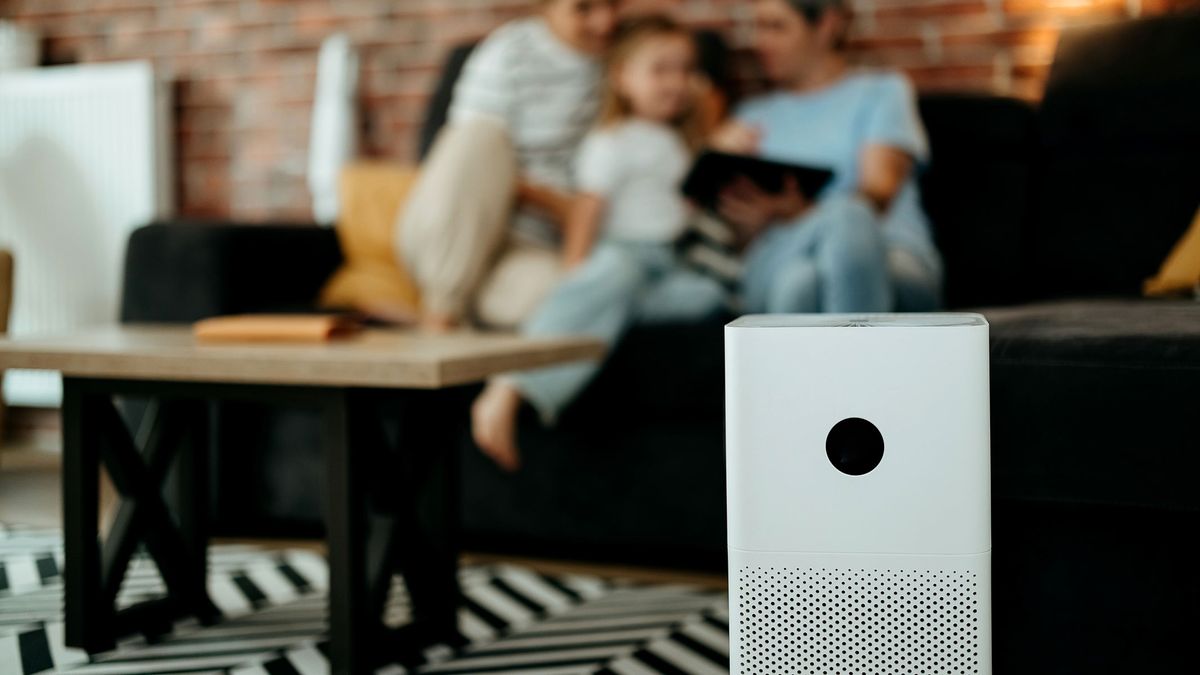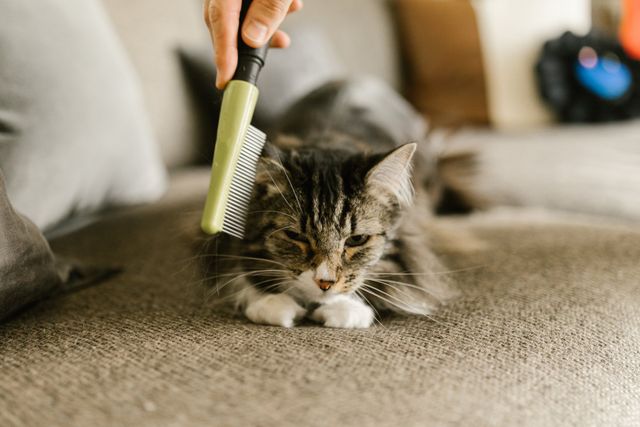Pet hair can be a challenge for pet owners. It floats everywhere, making the air less clean.
Keeping indoor air free from pet hair is important for your health. Pet hair can trigger allergies and make breathing harder. Many pet owners struggle to find the best solutions. We will explore practical ways to reduce pet hair in indoor air.
These tips will help keep your home cleaner and your air fresher. Whether you have a cat, dog, or other furry friend, these methods will make a difference. Say goodbye to endless pet hair and hello to a cleaner home. Let’s dive into the best ways to manage pet hair in your indoor air.
Regular Grooming
Regular grooming is key to reducing pet hair in your home. It helps control shedding and keeps your pet’s coat healthy. This practice not only makes your living space cleaner but also strengthens your bond with your furry friend. Let’s look at some effective grooming techniques.
Brushing Techniques
Brushing your pet regularly is essential. Use the right brush for your pet’s coat type. Short-haired pets need a different brush than long-haired ones. Brush in the direction of the hair growth. This prevents tangles and removes loose hair.
Spend a few minutes each day on this task. Consistent brushing reduces the amount of hair that falls on your furniture and floors. It also helps distribute natural oils, keeping the coat shiny and healthy.
Bathing Frequency
Bathing your pet keeps their coat clean and reduces shedding. Use a pet-friendly shampoo to avoid skin irritation. Bathing frequency depends on your pet’s breed and lifestyle. Generally, dogs need a bath every four to six weeks.
Cats usually require less frequent baths. Too much bathing can dry out their skin. Regular baths help remove loose hair before it ends up in your home’s air. Keeping your pet clean and well-groomed is crucial for a hair-free home.
Effective Vacuuming
Effective vacuuming is crucial for reducing pet hair in indoor air. Regular vacuuming helps to remove pet hair from carpets, furniture, and floors. It ensures that the indoor air remains clean and free from allergens. Let’s explore the best practices for vacuuming to keep your home hair-free.
Vacuum Types
Choosing the right vacuum is important. There are various types of vacuums available. Upright vacuums are powerful and great for large areas. Canister vacuums are versatile and easy to maneuver. Handheld vacuums are perfect for small spaces and quick clean-ups. Stick vacuums are lightweight and convenient for daily use. Robot vacuums offer hands-free cleaning and can be scheduled to run automatically. Each type has its own strengths and can be useful in different situations.
Vacuuming Tips
Vacuum regularly to prevent the build-up of pet hair. Focus on high-traffic areas where your pets spend most of their time. Use attachments to reach corners, upholstery, and tight spaces. Empty the vacuum bag or canister frequently to maintain suction power. Clean or replace filters to ensure the vacuum works efficiently. Vacuum in multiple directions to pick up all the hair. Consider using a vacuum with a HEPA filter to trap tiny particles and allergens. This keeps the indoor air cleaner and healthier.
Air Purifiers
Are you tired of battling pet hair in your home? Air purifiers can help reduce pet hair in the air. They can make your indoor environment cleaner and more comfortable. Learn how to use air purifiers effectively.
Hepa Filters
Air purifiers with HEPA filters are the best at trapping pet hair. HEPA stands for High-Efficiency Particulate Air. These filters can capture tiny particles. They can even trap particles as small as 0.3 microns. Pet hair, dander, and other allergens get caught in the filter. This keeps the air in your home fresh and clean.
Here’s why HEPA filters are important:
- Efficiency: They capture 99.97% of particles.
- Health Benefits: They reduce allergens and improve air quality.
- Durability: HEPA filters last longer than regular filters.
Placement Tips
Where you place your air purifier matters. To get the most out of it, follow these placement tips:
- Central Location: Place the purifier in the center of the room.
- Off the Ground: Elevate the purifier for better air circulation.
- Away from Corners: Corners can block airflow. Keep the purifier away from them.
- Near Pet Areas: Place the purifier close to where your pet spends time.
By following these tips, your air purifier will work more efficiently. It will keep your home free from pet hair and dander.

Credit: www.livescience.com
Pet-friendly Furniture
Pet hair can be a nuisance, especially on furniture. Choosing the right furniture can help reduce pet hair in indoor air. Pet-friendly furniture is designed to be durable and easy to clean. It can make a big difference in maintaining a clean home.
Material Choices
Choosing the right material is crucial. Some materials attract less pet hair than others. Here are some of the best options:
- Leather: Pet hair does not stick easily and can be wiped clean.
- Microfiber: This material is tightly woven, making it harder for pet hair to penetrate.
- Canvas: Durable and easy to clean. Great for pet owners.
Easy-to-clean Options
Furniture that is easy to clean helps reduce pet hair buildup. Look for these features:
- Removable Covers: Machine-washable covers make cleaning simple.
- Slipcovers: Easily replaceable and washable.
- Stain-resistant Fabrics: Help in quick cleaning of pet hair and accidents.
Choosing pet-friendly furniture can make pet ownership more enjoyable. It reduces the hassle of cleaning and keeps your home cleaner. Consider these options to improve your indoor air quality.
Regular Cleaning
Regular cleaning is essential to reduce pet hair in indoor air. Consistent and thorough cleaning helps in managing pet dander and hair. This keeps your home healthier for everyone.
Dusting Strategies
Effective dusting can capture and remove pet hair from surfaces. Use microfiber cloths as they trap more hair than traditional dusters. Dust from top to bottom to ensure you capture fallen particles.
Consider using a damp cloth to avoid scattering hair. Pay special attention to furniture, shelves, and other surfaces where hair accumulates.
Mopping Techniques
Mopping floors helps in picking up pet hair that vacuuming might miss. Use a microfiber mop for better hair collection. Wet mopping works best to ensure hair sticks to the mop.
Change the mop water frequently to avoid spreading hair around. Focus on corners and under furniture where pet hair tends to gather.
Pet Diet And Health
Maintaining your pet’s diet and health can significantly reduce pet hair in indoor air. A healthy pet sheds less, leading to a cleaner home environment. Below are key aspects of pet diet and health that can help control shedding.
Nutritional Tips
A balanced diet is crucial for your pet’s overall health and coat quality. Ensure that your pet’s diet includes essential nutrients like:
- Protein: Vital for hair growth and skin health.
- Omega-3 Fatty Acids: Found in fish oil, they improve coat shine and reduce shedding.
- Vitamins: Vitamins A, E, and B are essential for skin and fur health.
Feeding high-quality food can make a difference. Avoid fillers and additives. They can cause allergies and lead to excessive shedding.
Supplements
Sometimes, diet alone isn’t enough. Supplements can provide extra nutrients that your pet’s food may lack. Consider the following supplements:
- Fish Oil: Rich in Omega-3s, it promotes a healthy coat.
- Biotin: Supports skin health and reduces shedding.
- Probiotics: Improve digestion, which can affect coat quality.
Always consult your vet before adding supplements to your pet’s diet. This ensures they are safe and effective for your pet’s specific needs.
Creating Pet-free Zones
Creating designated pet-free zones can significantly reduce pet hair in indoor air. Regular vacuuming and air purifiers help maintain a cleaner environment.
Creating pet-free zones can significantly reduce pet hair in indoor air. These areas help manage pet hair and keep certain spaces clean. By designating specific rooms as pet-free, you can enjoy a more hair-free environment.Restricted Areas
Identify areas in your home where pets are not allowed. Common choices include bedrooms, kitchens, and home offices. Use baby gates or closed doors to enforce these boundaries. This will help maintain cleaner air in these zones.Training Tips
Training your pets to respect these zones is essential. Start by using positive reinforcement. Reward your pet with treats or affection when they stay out of restricted areas. Consistency is key. Always enforce the rules to help your pet understand boundaries. Over time, they will learn and respect the designated pet-free zones. “`:strip_icc()/bhg-air-purifiers-pets-may-24-test-clorox-alexa-smart-medium-room-true-hepa-kathy-barnes-15-f2f796e8a675445fa35843b12bda97ca.jpeg)
Credit: www.bhg.com
Professional Help
Pet hair can be a persistent problem in indoor air. Professional help can make a significant difference. Seeking expert services ensures thorough and effective solutions. Two key areas for professional assistance are grooming and cleaning services.
Grooming Services
Regular grooming keeps your pet’s coat healthy. Professional groomers use specialized tools. They can remove loose hair and reduce shedding. Frequent grooming sessions mean less hair in your home. Groomers also provide advice on the best practices.
Professional groomers can identify skin issues. Early detection of problems helps in timely treatment. This keeps your pet’s coat in optimal condition. Healthy coats shed less, reducing pet hair in the air.
Cleaning Services
Professional cleaning services tackle pet hair effectively. They use industrial-grade equipment. These tools are more powerful than regular household vacuums. They can remove pet hair from carpets, furniture, and air ducts.
Cleaning experts also know the best techniques. They can reach hard-to-clean areas. Regular professional cleaning ensures your home stays free of pet hair. This improves indoor air quality and reduces allergens.
Professional cleaners also offer advice. They can recommend the best cleaning schedules. Following their advice helps maintain a clean and healthy home environment.

Credit: www.a-1american.com
Frequently Asked Questions
How Can I Reduce Pet Hair In My Home?
Regular grooming and vacuuming can help. Use air purifiers with HEPA filters to trap pet hair and dander.
What Air Purifiers Are Best For Pet Hair?
HEPA air purifiers are effective. They capture small particles, including pet hair and dander, improving indoor air quality.
How Often Should I Vacuum For Pet Hair?
Vacuum at least twice a week. Focus on areas where your pet spends most of their time for best results.
Do Air Purifiers Help With Pet Allergies?
Yes, air purifiers with HEPA filters reduce allergens like pet dander. They can alleviate allergy symptoms significantly.
Conclusion
Reducing pet hair in indoor air is manageable with the right steps. Regular grooming helps. Using air purifiers makes a big difference. Clean floors and furniture often. Choose pet-friendly fabrics for furniture. These simple actions create a cleaner home. Less pet hair means better air quality.
Your pets and family will breathe easier. Enjoy a cleaner, healthier living space with your furry friends.
Rakib Sarwar is a Registered Pharmacist and a reputed health and wellness blogger. He has a great interest in Air purifiers.
